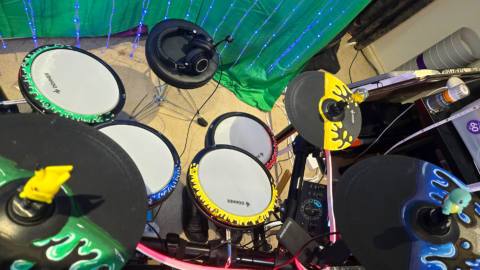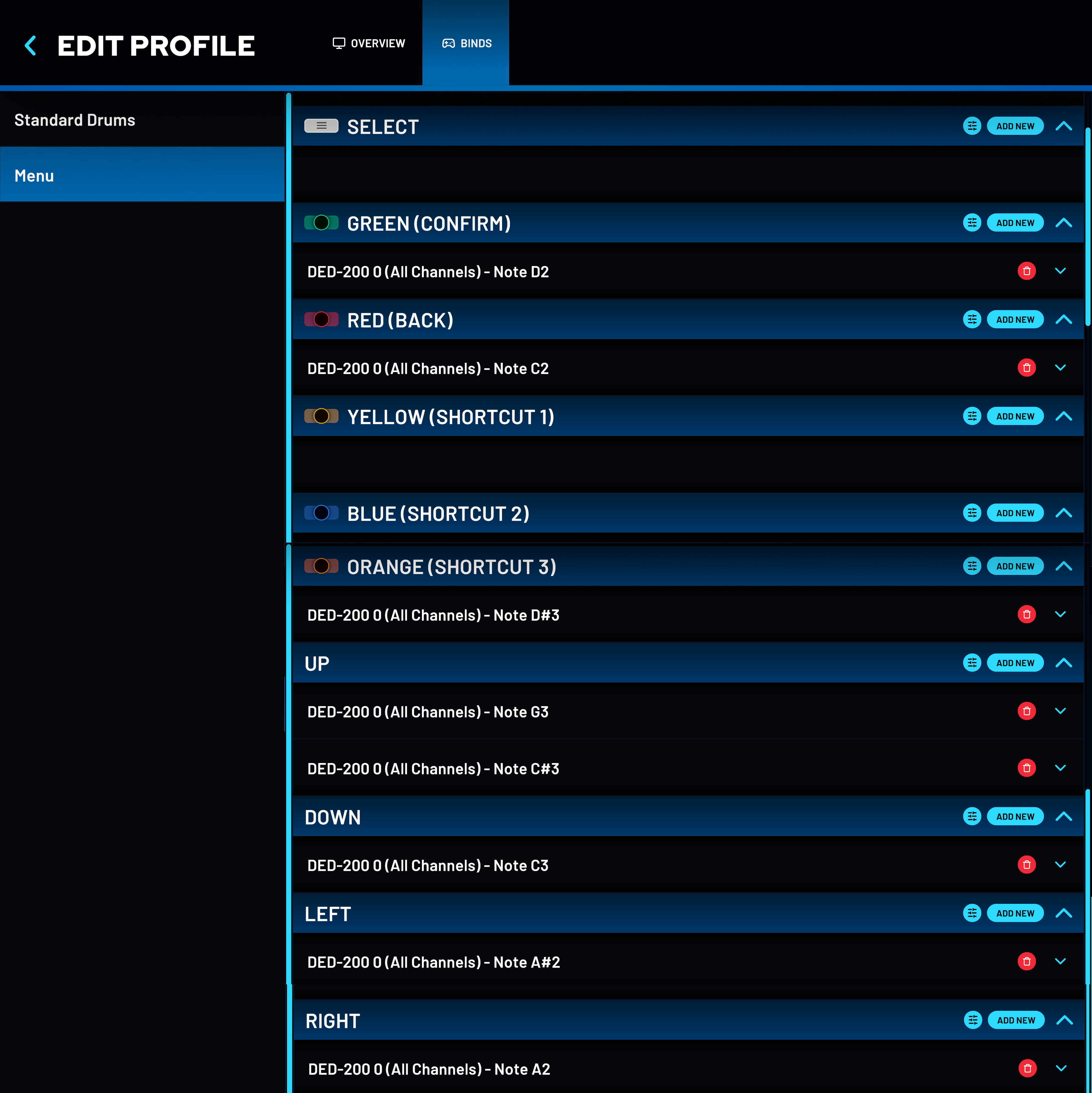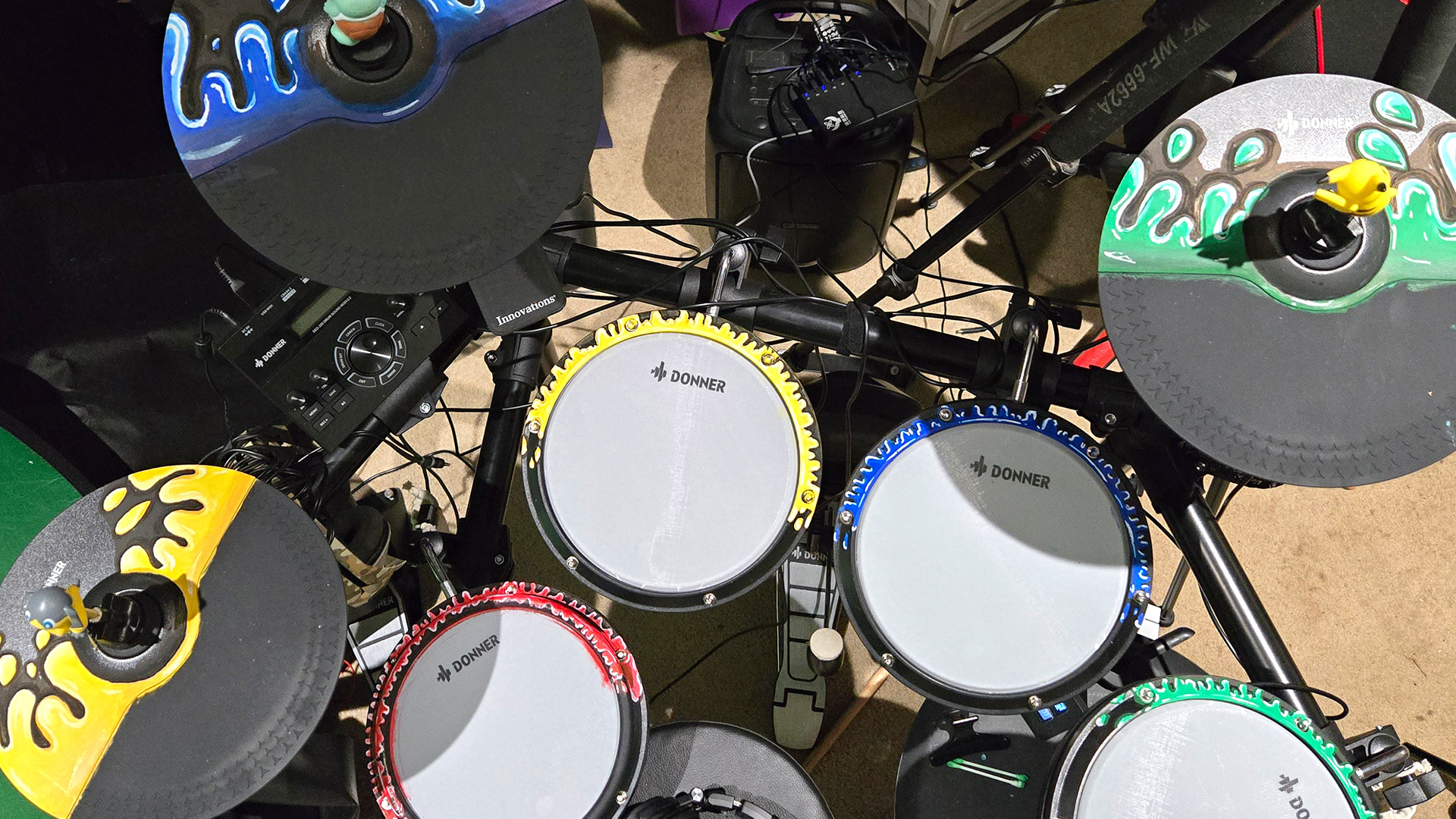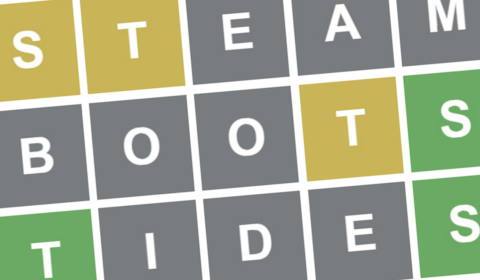I’m not alone when I say I have always wanted to learn how to play the drums. Though I never really believed I could, and not without reason. When I was in school, I dabbled in music and played a few instruments here and there, but never managed drums. I didn't know why at the time but drumming was always to be a challenge. Thanks to a combination of a lack of coordination, ligaments made out of old elastic bands, and other hypermobility and energy issues, I was flat out told that I’d never be able to hit at things rhythmically.
I’ve still kept an interest in music but not actively played very much, and certainly never touched a drum kit. A few years back a friend let me have a bash on their ekit and taught me a basic beat, completely blowing my mind. It was possible. There’s no way my house can fit a traditional kit, so I started looking more into electric kit solutions and software. That’s when one of my friends, who's been drumming for over 20 years, got me into YARG.
YARG stands for Yet Another Rhythm Game. It’s essentially open source Guitar Hero/Rock Band that you can download and play right now, for free. It adopts the same 'highway lane' style gameplay as those aforementioned titles—where notes move closer and require a rhythmic banging to the correct time signature (otherwise known as almost certainly 4/4) —and currently supports Guitar Hero style controllers, vocals, and drums.
Getting started
Drums in these games, especially for a beginner drummer, aren't that different to real drumming, and YARG is made to work with ekits via MIDI (most often terminating via USB on the other end). You can then set your bindings to match your kit inside YARG. It should work with just about any ekit and means you don’t have to blow your budget on a pro kit to get started.
After a fair bit of research I went with the Donner DED-200 with four drum pads and three cymbals, plus kick and high hat pedals. It’s considered as a budget and beginner friendly kit, which was especially true for me as it was on sale at the time. It's a bit noticeably cheap in areas like the kick, height, and stool to the point where I've already had to replace the bass pedal which has helped immensely. Still, I have been pretty impressed, for the price.
Setting up an ekit is a bit like assembling DIY furniture, but nothing more complicated than that. You can freely move things around, too. I have my high hat on the other side of my control panel than the instructions because otherwise it would be quite cramped. Comfort is key, especially for your high hat, snare, and kick positions, which should be prioritised so you can drum for longer without hurting yourself.

Each sensor plugs back into its assigned slot on the back of the control panel via its own cable. It's pretty hard to mess up, though there is some cable management involved if you want it looking neat.
The control panel also houses ports like power, aux and MIDI out. The aux is there for any headphones or a speaker you'd like to connect to listen in to your timely drumming, as the kit doesn't have its own speaker. This is great for general practice, and I have it set as a line in to my PC so I can hear drum hits ontop of the music and drum tracks. I've found this more useful for learning than simply having YARG cut the drum track when I mess up because I can hear what I've done. I didn't have this set up initially and was able to play the game just fine, but as I've wanted to improve my skills I feel this change has helped..
If you're just looking to get Yarg going, ignore the aux for now and, plug that MIDI to USB cable into a port on your PC and power on the kit. If you're in YARG, hit one of the pads in the menu screen and you should see the kit appear as a device, now you can go into profile, select it and set your binds. You'll have to hit a pad in the menu every time you open YARG for it to register the kit, but your profile binds should hold for later. I was a little unsure what to set as a beginner, but after running it past my YARG friend this is what I've settled on:
I choose the four-lane drums over the five-lane as it feels less gamey and more accurate to real life, but you can set one up for each with the same kit and try both. You'll just have to come back to the profilers menu to swap between them to do so.

- Red Pad (First) – Snare and Rim
- Yellow Pad (Second) – Tom 1
- Blue Pad (Third) – Tom 2
- Green Pad (Fourth) – Floor Tom
- Yellow Cymbal (Second) – High hat – all configurations with pedal and without
- Blue Cymbal (Third) – Crash – Crash – both sensors
- Green Cymbal (Fourth) – Ride – Ride – both sensors
- Kick Pedal – Bass drum
You can also set the drum binds to use the menu. I don't tend to map everything and keep a mouse by my kit if I need more control, but this is what has been working for me.

- Green (confirm) – Snare (Red, confusing I know)
- Red (back) – Kick
- Orange (Shortcut Three) – Ride (Green)
- Up – Crash (Blue)
- Down – Tom 1 (Yellow)
- Left – High Hat (Yellow)
- Right – Tom 2 (Blue)
I even wound up painting my kit to match, but be smart about it if you do. Smarter than me at least. Paint doesn't stick well so you'd be better off taking off the parts you want to paint and spraying them. Don't paint things you're gonna hit cause it'll come right off. Stickers are probably a better choice.
I've gamerfied my setup to the point of adding RGB lighting. I've got a Govee COB Strip drapped over the frame and a curtain light in the background. Both are set to modes that respond to sound. Since most sounds are coming directly into my headset, most of what the lights hear are my drum hits, so the scene pulses around me in time to my fumblings. When you're in the zone, it's like Star Power mode IRL. I've got a few camera angles recording at once, and the whole thing almost makes me look kinda cool.
Kits come in various configurations and YARG should work with all of them, but you can check the compatibility list for safety. Better kits come with more features but YARG doesn’t make full use of my current kit's abilities, so you might not need much to get started. If you're strictly wanting one for YARG, I'd recommend going for something with a minimum of three symbols and four pads as well as kick. Things like alternate symbol sensors, snare rims, and even high-hat pedal probably aren't as worthwhile.
Naturally, there’s nuance lost when playing a rhythm game with an ekit over 'playing the drums' but it felt like a pretty great approximation. Most importantly, I wanted to see if I could use this game to actually help me learn how to play drums.
Let’s play

Just like the music party games of old, YARG comes with a bunch of included songs, but you can also find heaps more to download online. It works with tracks made for Clone Hero (another modern Guitar Hero game), and most old Rockband and Guitar Hero libraries are still lingering around if you know where to look. Songs have their own general difficulty level, shown for each instrument, and you can choose from easy to expert difficulties. There are even plans for a proper pro mode, which will be even more like real drums and feature additional controls like hi-hat open and close.
Despite my beginner status, I started out on medium difficulty on some of the simpler songs and fumbled my way around the kit. Easy was just a bit too simplistic and didn't keep me engaged enough to enjoy. I struggled massively with things like limb independence, kit familiarity, and basic stamina, but it was still fun and I could feel myself improving.
The entertaining game aspect of YARG, combined with how easy it is to just start playing a song, is a huge help in motivating me to practise and just get in a little bit of kit time every day I can. I also checked out a few beginner YouTube videos to get my form and understanding down at first but tried to limit this for the experiment of it all.
After a couple of weeks, medium was too easy so I upped the difficulty to hard.
Hard is a lot more challenging. It adds new patterns your body isn’t used to yet and forces you to use more of the kit. In some ways it felt like going back to step one. But when I was looking at the things I was starting to learn, I don’t think you would have been able to convince me I’d have the coordination to even attempt this sort of stuff just a few weeks ago. My general coordination and stamina had improved immensely, and I could reliably pull out a few simple beats and play them from muscle memory, without the game or music.
I’d gone from not being able to play the drums, to kinda being able to play a little, which felt like an actual miracle.
Did it make me a better drummer, for real?
In the two months since I started, sickness and travel took me away from my kit for a few weeks, but I could see real improvement. I knew some of it had to be transferable to real drumming, but was curious as to how much. I wanted a real drum lesson on a real kit, just to see.
I looked around my area and lucked out in finding Max Paterson of Maximum Drumming, a massively talented and passionate percussionist and instructor who was also super interested in my experiment. We arranged for a sort of basic assessment and lesson so I could see how different a real kit was, and Max could assess my YARG gotten skills.
Before we started, Max talked about how different a real kit would feel. And he’s so right. You hit a thing and a big loud noise happens and you feel it. It’s also bouncier than my pads and just way more fun and intimidating. I was worried all my ekit practice would make playing on real drums really difficult just for being so different. Thankfully, and in part because Max’s fancy kit is much better than my cheap ekit, generally everything felt more responsive and comfier than my little setup, which was a nice surprise.
He was curious about how relying on the note highway would potentially affect how I perceive the music. With notes coming at you like that it’s more of a reaction game, quite different from reading music or playing from ear. He also wanted to test whether or not I was hearing and learning how the drums should sound. So we did some sight reading and a few tests where Max would play something and have me play it back without looking.
These were all at a beginner level, and having a musical background absolutely helped out, but even I was surprised when I did really well.

After somewhat getting over my nerves and getting used to a real kit, Max started to test some of my other abilities, having me play along to music or with him and was pretty impressed. We agreed that my musical background definitely helped a lot with things like understanding time signatures and reading sheet music, and generally being familiar with how it all works. But according to Max, a lot of drumming skills—like my limb independence, coordination, rhythm, and general ability—were quite a bit further ahead than he would have expected for a student with my experience.
I’ve booked in for more lessons, and I am still enjoying the heck out of YARG for really rewarding and enjoyable practice that, importantly, I actively want to do. It definitely feels different than actively practising or working on a song or pattern, as it’s less intentional in that way. But I can still feel it helping me and my body get more proficient at beating the hell out of these poor drum pads, and letting me have a tonne of fun while doing it.
Of course, YARG hasn't cured my hypermobility. I have to play it slow and safe in order not to damage myself, and will often need rests or breaks for the sake of my joints. When I hit the sweet spot and manage to make a run of practice sessions, I can feel a lot of these areas strengthening, but they're far from good yet, and may never be great. But I can and do regularly hurt myself accidentally sleeping wrong far more than I have playing YARG so far. I haven't found a way to drum that doesn't hurt in my pelvic joints, but I also haven't found a harness that stops my shoulders subluxating in my sleep, and I don't plan on quitting either any time soon.
I guess what you could say is maybe I’m a drummer now, and I think I’m a far better one than I would be if I didn’t have YARG.






